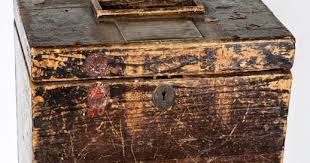The Ballot Act 1872: voting in private
It’s hard to imagine a time when people couldn’t cast their vote in private. But before 1872, bribery and corruption were common, and who people voted for was a very public affair.
The 1832 Reform Act had extended the franchise, and further parliamentary reform had taken place in 1867 (Gazette issue 23292), but men in the UK still didn’t have the right to vote in secret until 1872.
Women could not vote in parliamentary elections at all until 1918 (Gazette issue 30516), provided they were over 30 and either they, or their husband, met a property qualification.
Prior to the Ballot Act 1872, voters would give a show of hands,  stating their choice out loud, or mark their paper in public, while onlookers and
candidates’ agents cheered or jeered. The name and choice would be noted down in a
public poll book, which newspapers could publish.
stating their choice out loud, or mark their paper in public, while onlookers and
candidates’ agents cheered or jeered. The name and choice would be noted down in a
public poll book, which newspapers could publish.
As a consequence of open voting, men who rented their homes, or relied on a local employer for work, had to vote as the property owner or employer wished them to vote. If they didn’t, they would risk losing their home and the job that fed their family. Bribery with money and liquor, drunken fights and threats from candidates, were also common.
With electoral malpractice and intimidation clearly rife, politicians of the day recognised that change was needed. John Bright, cabinet member since 1868 (Gazette issue 23449), and radical speaker and supporter of parliamentary reform, was in favour of a secret ballot to prevent intimidation of workers. Edward Aldam Leatham (re-elected for Huddersfield in 1868, Gazette issue 23442), husband of Bright’s sister, introduced ‘the ballot bill’ to parliament.
The Ballot Act 1872 gave voters the right to privacy, away from the prying eyes of employers and landlords. It gained royal assent in July 1872 (Gazette issue 23886), as ‘The Act which establishes the Ballot will assist to secure alike the independence of the voter and the tranquillity and purity of elections for members to serve in Parliament’, with the aim ‘to check existing evils’.
It is probably no coincidence that in the same year a number of patents were filed in The Gazette for the invention of a ballot box that was fit for this new purpose. One was by engineer Christopher Brackell in December 1872:
‘2256. And Christopher Brakell, of York-street Chambers, York-street, Manchester, in the county of Lancaster, Engineer, has given the like notice in respect of the invention of "an improved ballot box or apparatus for the registration of votes by ballot."’ (Gazette issue 23927)
A Pontefract by-election first
Pontefract was the first town to vote in private, just three weeks after the act was passed. Pontefract’s Liberal MP, Hugh Childers, newly appointed as a minister, had to win a by-election to be able to serve (Gazette issue 23888):
‘Crown Office, August 17, 1872. MEMBER returned to serve in the present PARLIAMENT. Borough of Pontefract. The Right Honourable Hugh Culling Eardley Childers, of 17, Princes-gardens, in the county of Middlesex, Chancellor of the Duchy of Lancaster.’
Britain’s first secret ballot box is on display at Pontefract Museum and is still marked with wax seals that ensured that votes were not tampered with. The seal was made with a liquorice stamp from a local factory that was used to make Pontefract cakes.
The Corrupt Practices Act 1883
The Ballot Act had failed to remove bribery from the voting process, though, and electoral spending remained unlimited.
As a result, Gladstone’s second ministry set up a royal commission to investigate electoral practices. This led to the Corrupt and Illegal Practices Act 1883 (Gazette issue 25264), which established what a candidate could spend on election expenses, and what the money could be spent on. The act criminalised attempts to bribe voters and banned the buying of food or drink for this purpose, with more severe fines and in some cases imprisonment, for those who broke the rules.
Image: the Pontefract ballot box used in the UK's first election by secret ballot, 15 August 1872 © Wakefield Council
